Gone are the days when a corridor was simply a pass-through; today’s hallway lighting can subtly sculpt space, boost safety, and set the emotional tone for the rooms beyond. Designers are leaning on layered schemes, energy-smart controls, and statement fixtures to turn even the narrowest passage into an experience. Below you’ll find twenty fresh, practical ideas—each one wrapped in a concise, 100-to-120-word guide—to help you rethink what your hallway can do.
1. Recessed Downlights for Even Hallway Illumination
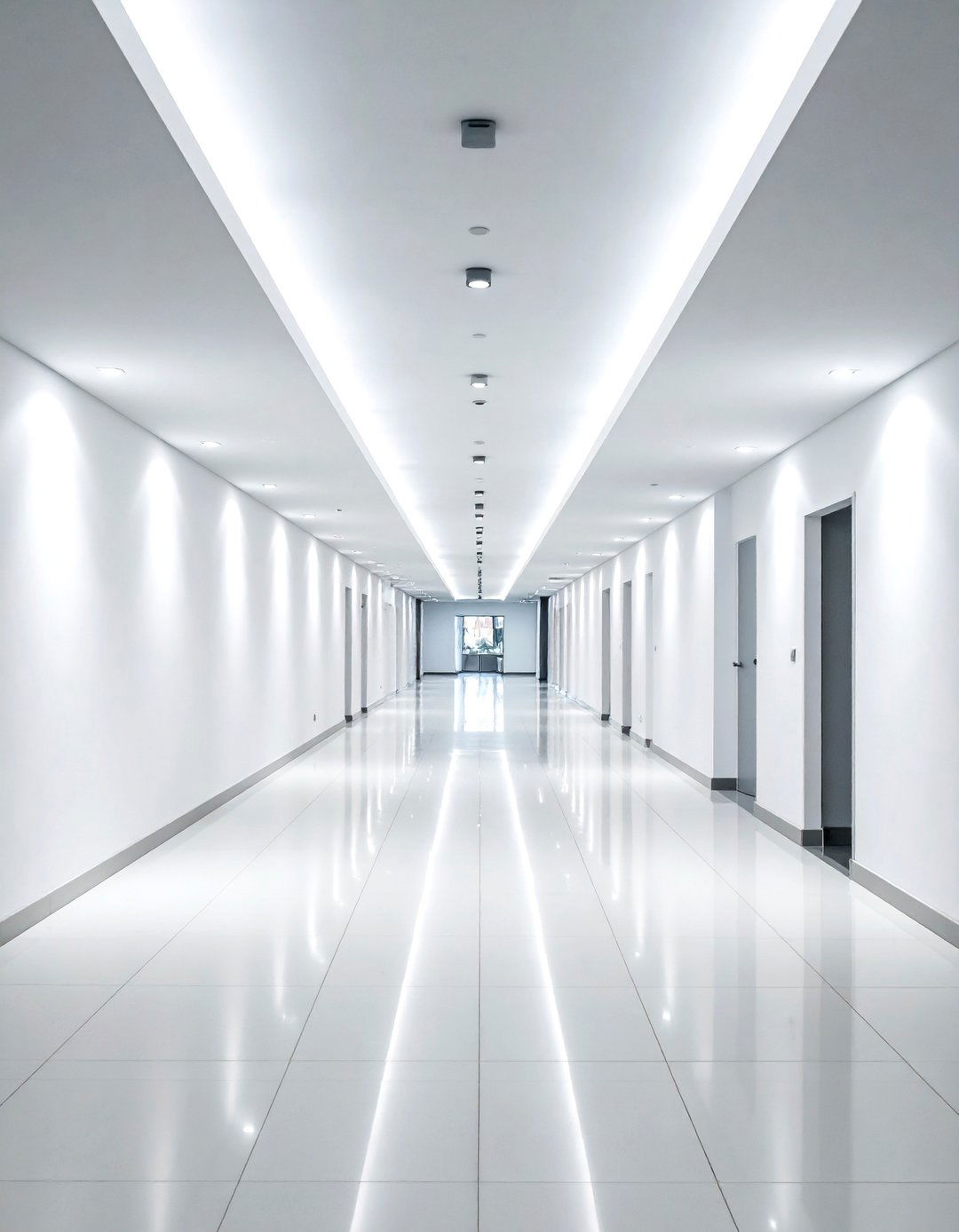
A practical starting point for hallway lighting is an even grid of recessed LED downlights. Follow the “ceiling-height-divided-by-two” rule: on an 8-foot ceiling, keep fixtures about 4 feet apart to avoid scallops and dark gaps LightUp Eaton. Start the first light roughly half that distance from the end wall for balanced brightness. Use dimmable trims rated 90 CRI or higher so colors stay true, and pair them with a low-glare baffle to prevent harsh spots in long sightlines. A 2700–3000 K bulb feels welcoming, while integrated drivers simplify wiring. Add a central dimmer to create a softer glow for late-night traffic without sacrificing task-level illumination during busy hours.
2. LED Cove Strips Highlighting Hallway Ceilings
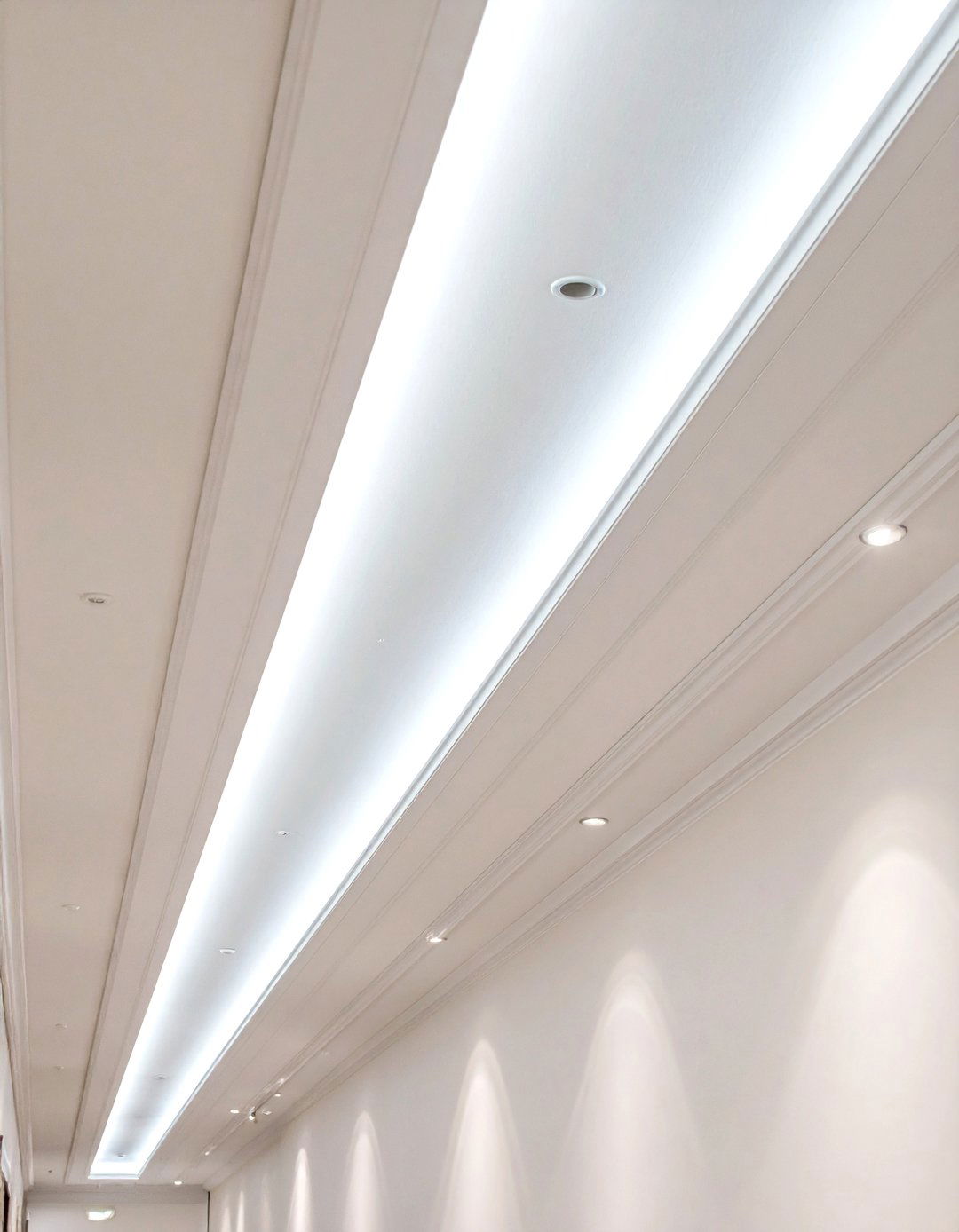
LED strip cove lighting skims soft light across the ceiling, visually lifting cramped passages and drawing the eye forward Ledrise Ledrise. Install a slim aluminum channel two inches below the ceiling line; the upward beam erases shadows and hides imperfections. Because strips run cool and consume little power, continuous runs are feasible even in tight soffits. Choose 240–300 LEDs per meter for seamless output, and fit a 24 V dimmable driver in an adjacent closet for easy service. A 2700 K strip warms walls, whereas tunable-white tape lets you swing to cooler tones on bright mornings—ideal when the hallway connects work-from-home zones with bedrooms.
3. Classic Wall Sconces to Frame the Hallway
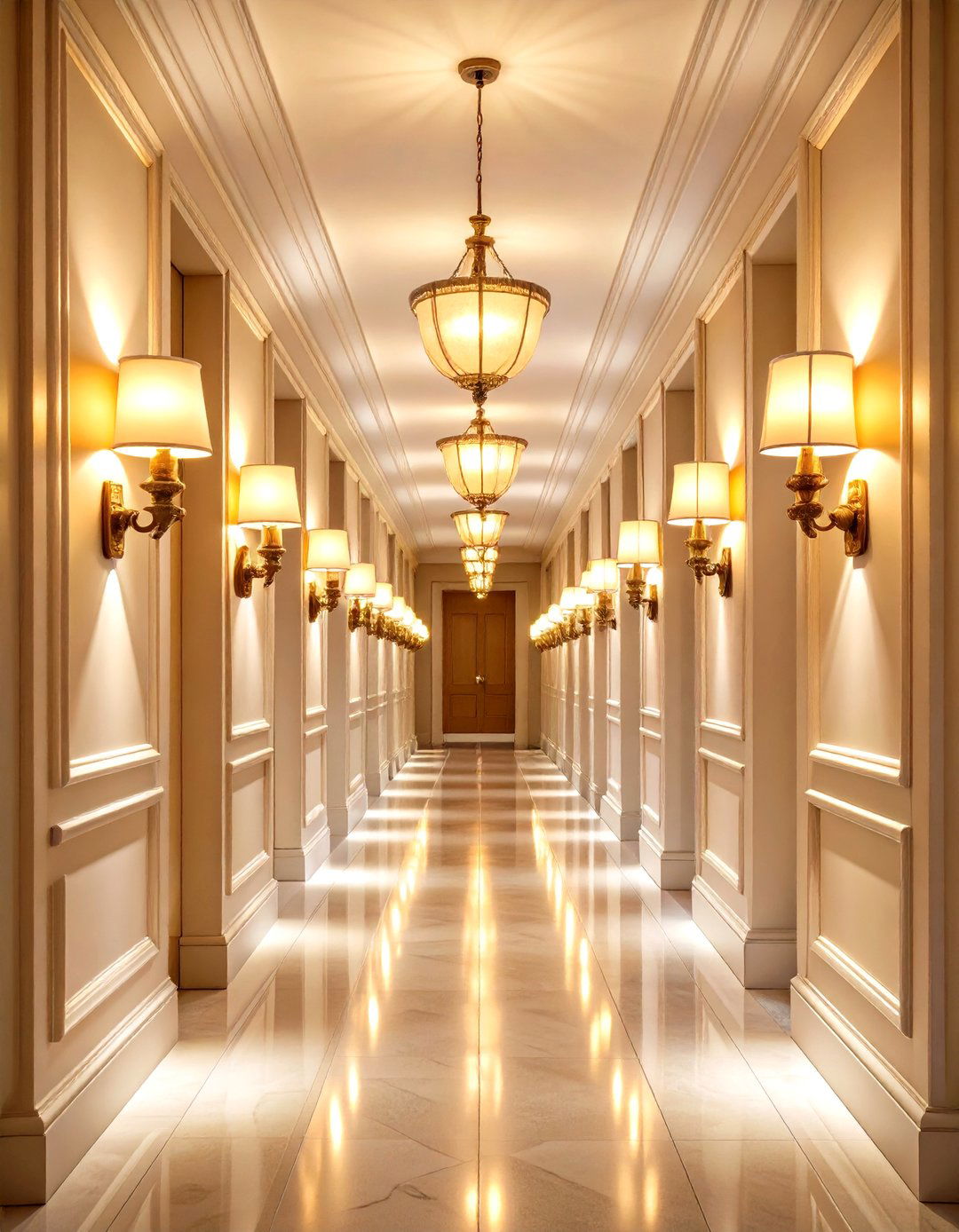
Wall sconces placed at eye level bring the glow closer to people and break up long walls. Mount them 60–72 inches above the floor and roughly six feet apart, adjusting for doors or artwork Schoolhouse. Pick shallow-profile shades so the fixtures remain head-clear in narrow corridors. Opal glass diffusers soften glare and cast both up- and down-light, layering gently with overhead sources. For period homes, a pair of brass swing-arm sconces can echo stair banisters; in modern builds, matte-black cylinders feel crisp. Tie sconces to the same dimming zone as recessed lights so the whole hallway brightens and fades in unison.
4. Motion-Sensor Hallway Lights that Save Energy
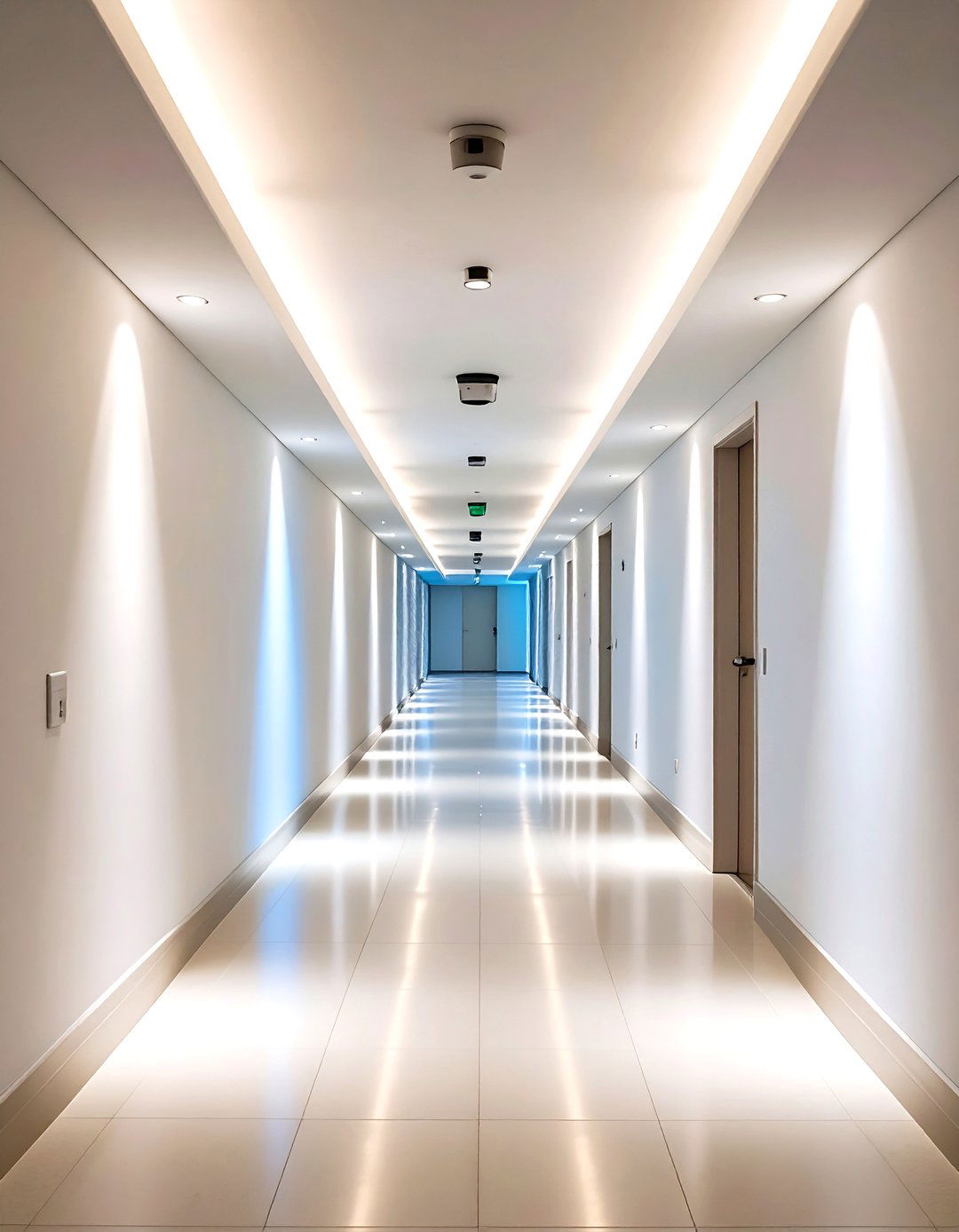
Occupancy sensors cut wasted watt-hours by trimming light levels whenever the hallway is empty, delivering 10 %–90 % energy savings depending on traffic patterns. For the best results, choose dual-technology sensors (PIR plus ultrasonic) mounted at the ceiling, where they cover twists and alcoves. Set a brief time-out—two to five minutes is enough—so lights snap back on as soon as someone reenters. Pair low-level night-light mode with full-output day mode for safety. Wireless sensors simplify retrofits: install a battery-powered unit at one end and link it to smart bulbs without opening walls.
5. Picture Lights Giving Hallway Art a Spotlight

Hallways double as mini-galleries when art is lit correctly. Slim picture lights with a 30- to 35-degree beam angle bathe frames in an even panel of light, revealing color and texture Rejuvenation. Mount the fixture so the arm projects two-thirds of the frame’s height; aim for the beam’s bottom edge to kiss the mat line. For clustered photos, a continuous rail or track with adjustable heads keeps wiring minimal. Battery-powered styles hide cords—perfect for plaster walls. A 3000 K LED accentuates warm pigments, while a high-CRI chip stops whites from looking muddy.
6. Slim Pendants Hanging Safely in the Hallway
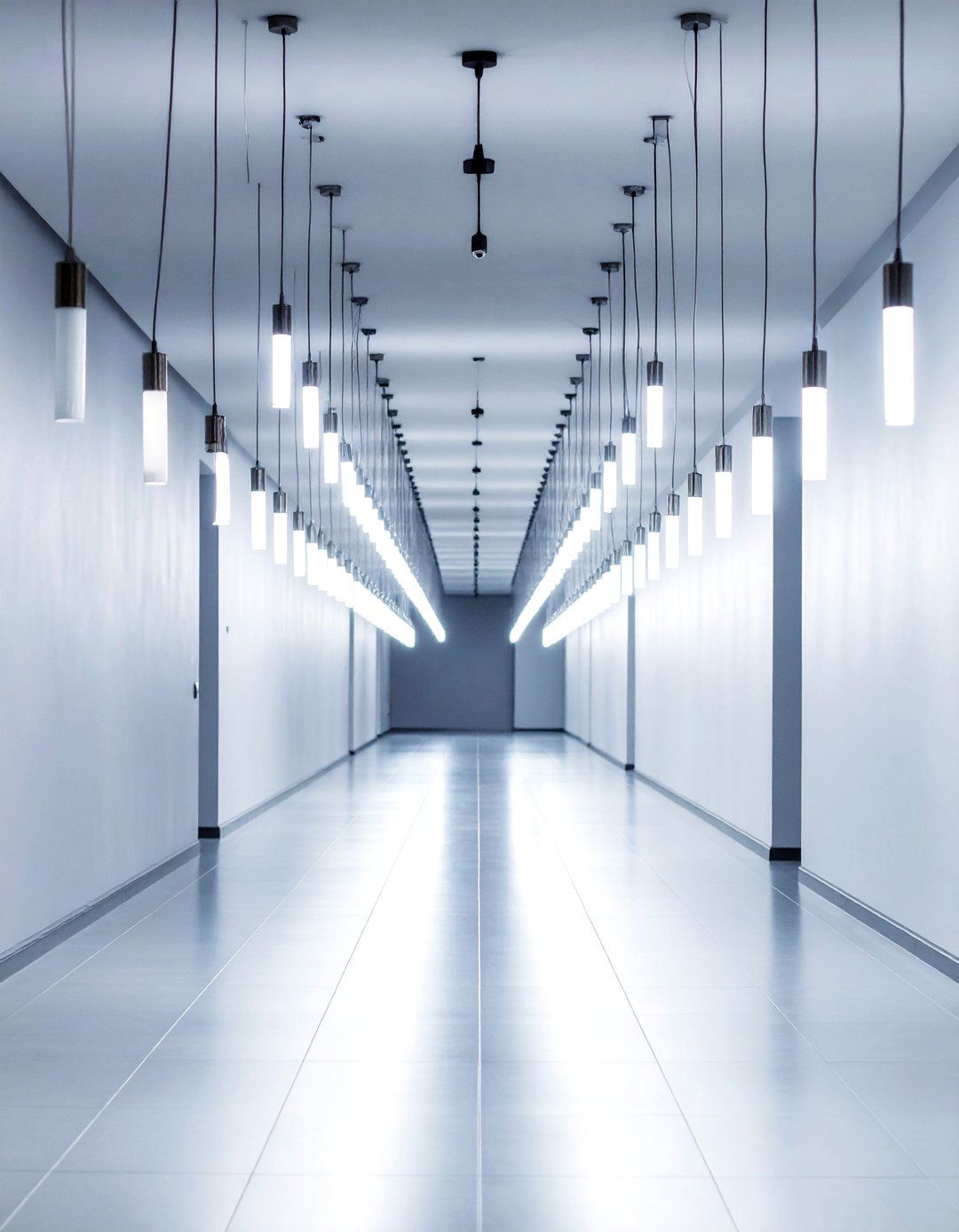
When ceilings soar, a row of slender pendants becomes functional jewelry. Keep at least seven feet of clearance from floor to shade bottom; on an 8-foot ceiling that means the fixture hangs no more than 12–20 inches down ROWABI Robern. Space pendants four feet apart for rhythm, and align cords precisely to avoid visual drift. Choose narrow shades—four to six inches—to prevent swing. Matte-opal globes diffuse sideways light that bounces off adjacent walls, brightening the path without glare. Add an inline multi-port canopy to feed several drops from a single box.
7. Sun Tunnel Daylighting for Windowless Hallways
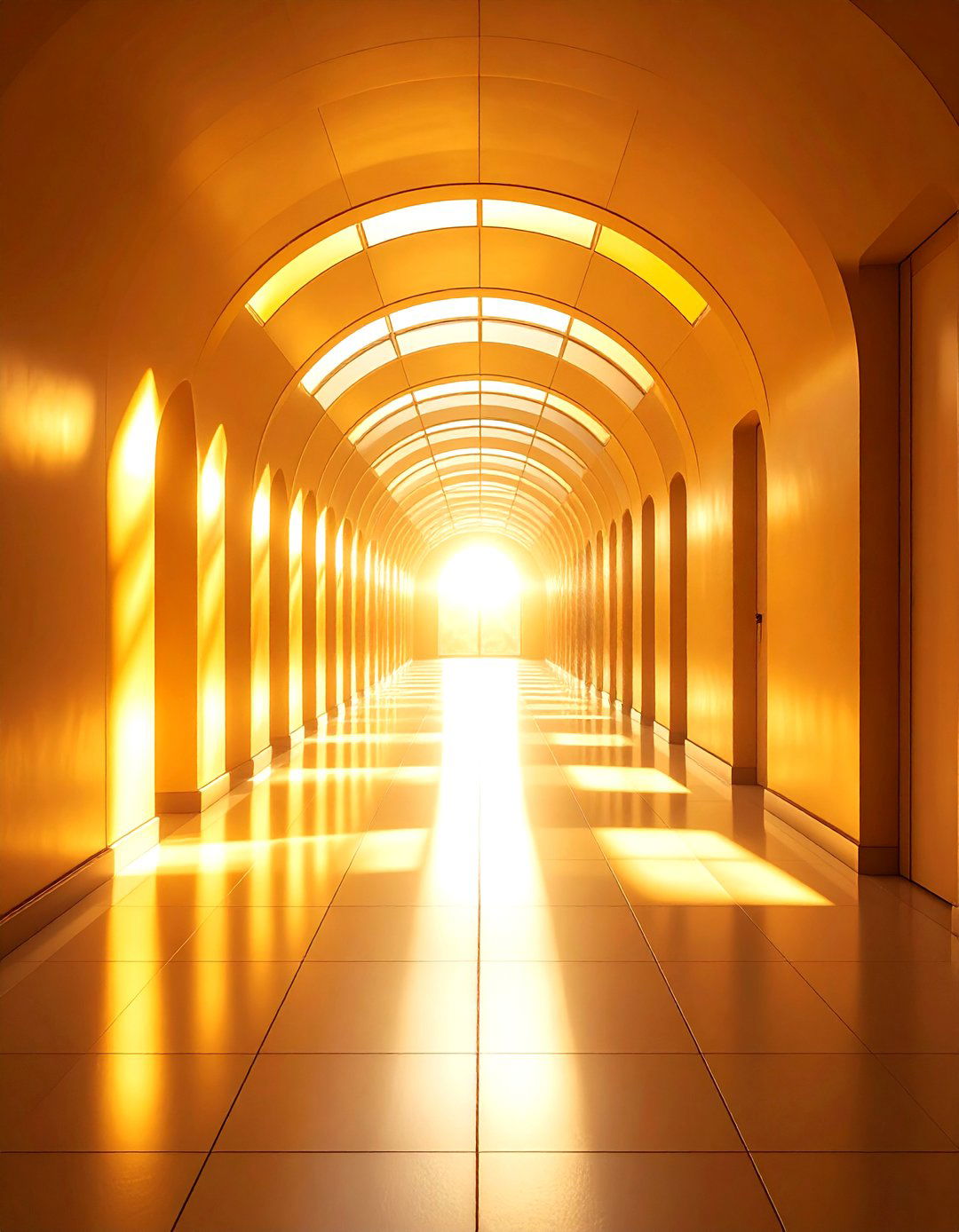
Nothing beats free light from the sky. A tubular skylight, or sun tunnel, channels daylight through a reflective shaft, washing dark hallways with up to 90 feet of natural illumination Velux USA. A clear, UV-blocking dome on the roof gathers sunlight, while a diffusion lens at ceiling level spreads it evenly, eliminating hot spots. Because the tube snakes between joists, installation rarely disturbs structure. On cloudy days, an integrated LED puck inside the lens provides backup. Pair with a daylight sensor so the electric light hands over silently to the sun whenever lux levels rise.
8. Layered Hallway Lighting for Flexible Mood
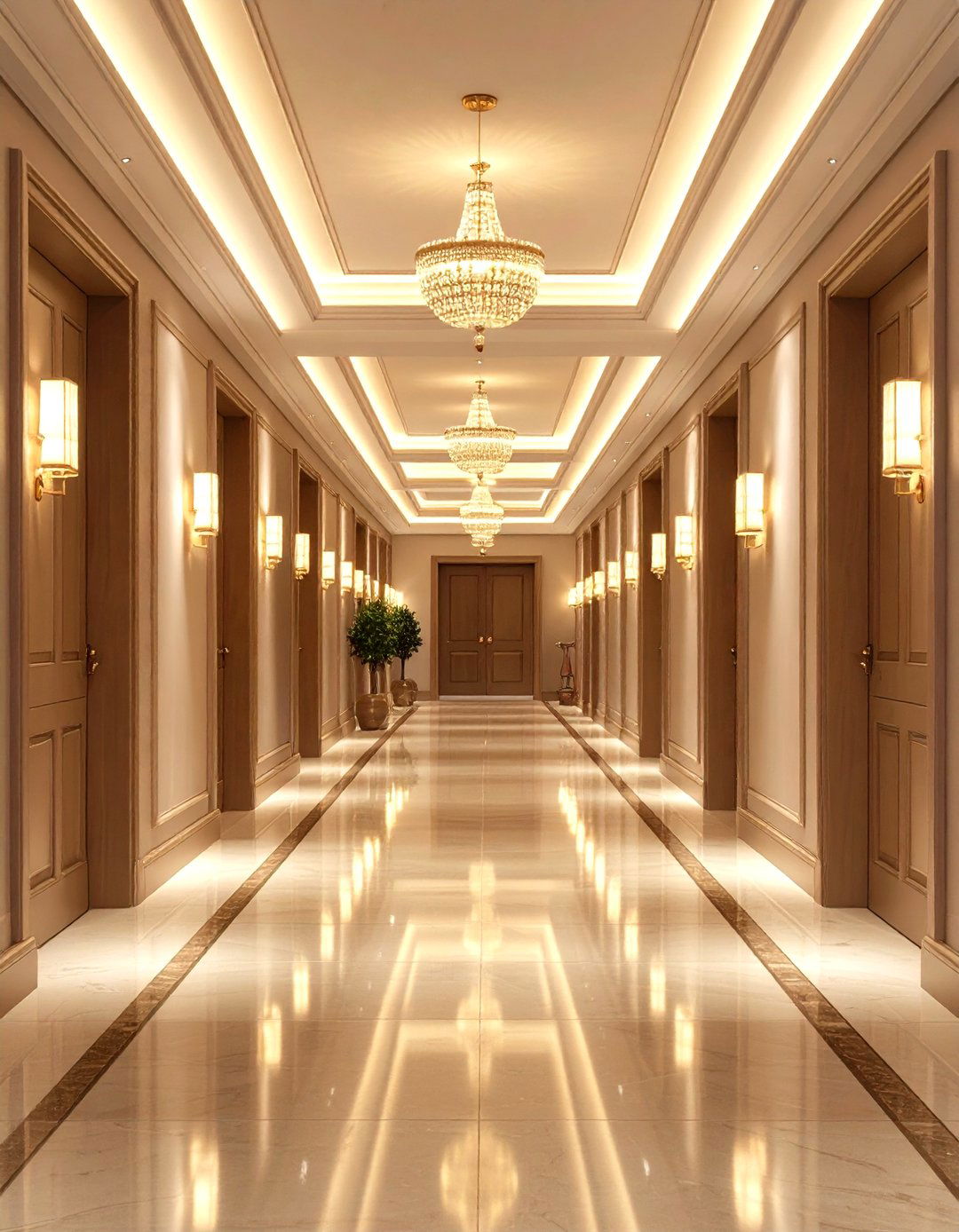
Designers treat hallways like any other room by blending ambient, task, and accent layers. Start with a uniform ambient base—recessed cans or a flush mount—then add task lighting at doors, and finish with art accents or low-level skirting LEDs Seus Lighting. Layering evens out shadows and lets you tailor brightness for everything from homework sprints to night-time trips. The concept also future-proofs wiring: you can tweak one layer without rehanging the whole scheme. Dimmers on each circuit make transitions seamless; smart scenes let you recall “Evening Glow” or “Cleaning Day” at a tap.
9. Smart Voice-Controlled Hallway Fixtures

Smart ceiling lights with Bluetooth and Zigbee radios allow hands-free control, color tuning, and scheduling—all handy when arms are full of groceries Philips Hue. Pair the fixtures with a hub or run them stand-alone via app. Create automations that ramp brightness at sunrise, drop to 20 % after bedtime, and flash a warning color when the doorbell rings. Voice assistants integrate naturally: “Hallway lights on” becomes second nature for kids. Firmware updates add features over time, so your hardware keeps improving without rewiring.
10. Warm-Tone 2700 K Hallway Glow
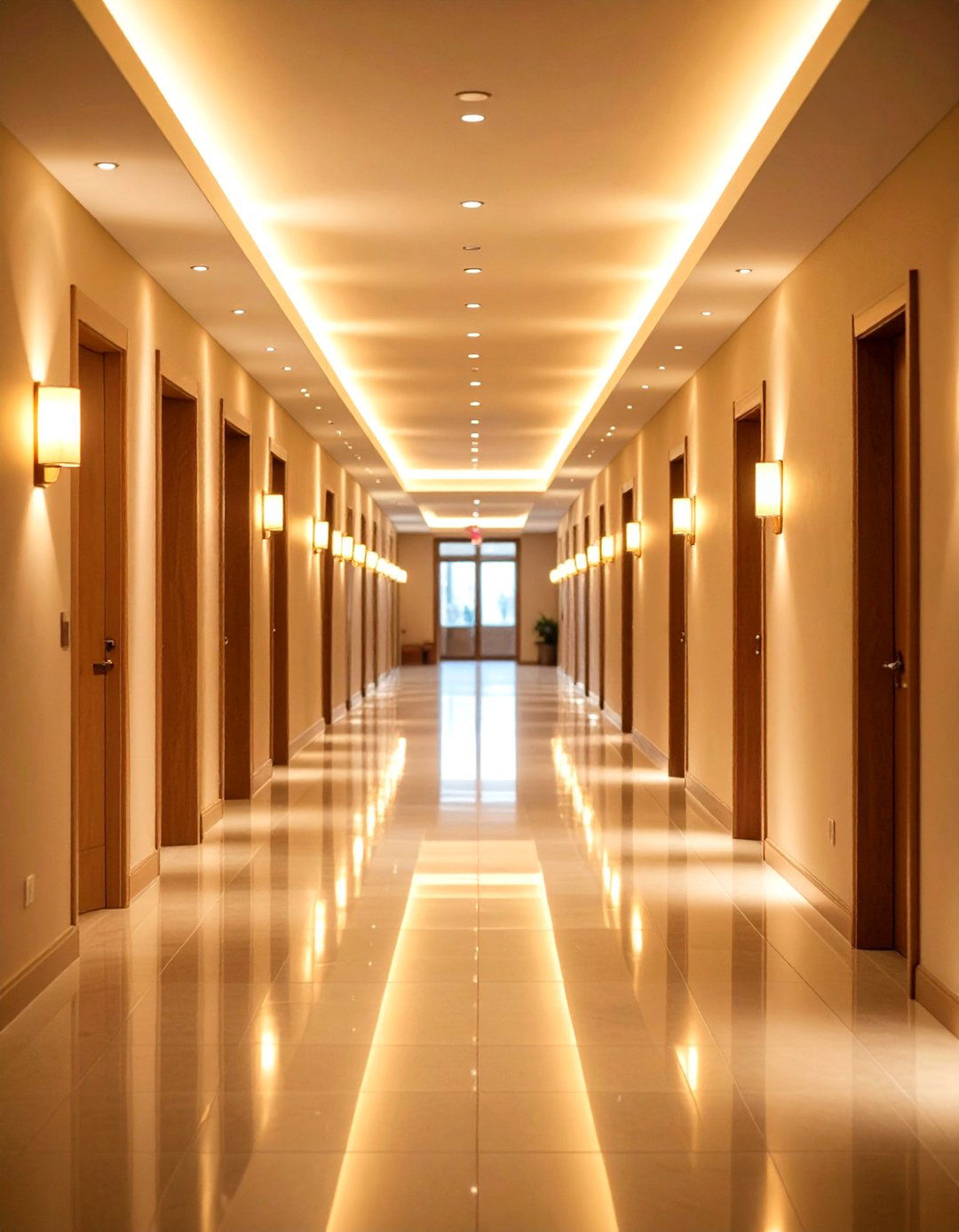
A 2700 K LED delivers the amber warmth of incandescent but with a fraction of the energy use. Studies on residential comfort suggest warmer color temperatures help occupants unwind and feel welcome Regency Insights. Use them where the hallway links to bedrooms or a lounge to maintain relaxation cues. High-CRI (90+) chips stop reds from dulling, ensuring family portraits stay lively. Pair warm bulbs with matte off-white paint; the extra red content prevents walls from looking dingy under evening light.
11. Crisp 4000 K Hallway Brightness

If your corridor serves a laundry room or workspace, a 4000 K neutral-white bulb sharpens contrast and makes whites look clean and crisp Revolve LED WAC Lighting. Because the spectrum leans cooler, it enhances perception of cleanliness—great near mudrooms. Install on a separate switch from warmer fixtures so you can flip to task mode only when needed. Combine with satin-finish trim paint; the subtle sheen bounces more photons, amplifying clarity without adding fixtures.
12. Color-Tunable Hallway LEDs for Circadian Rhythm
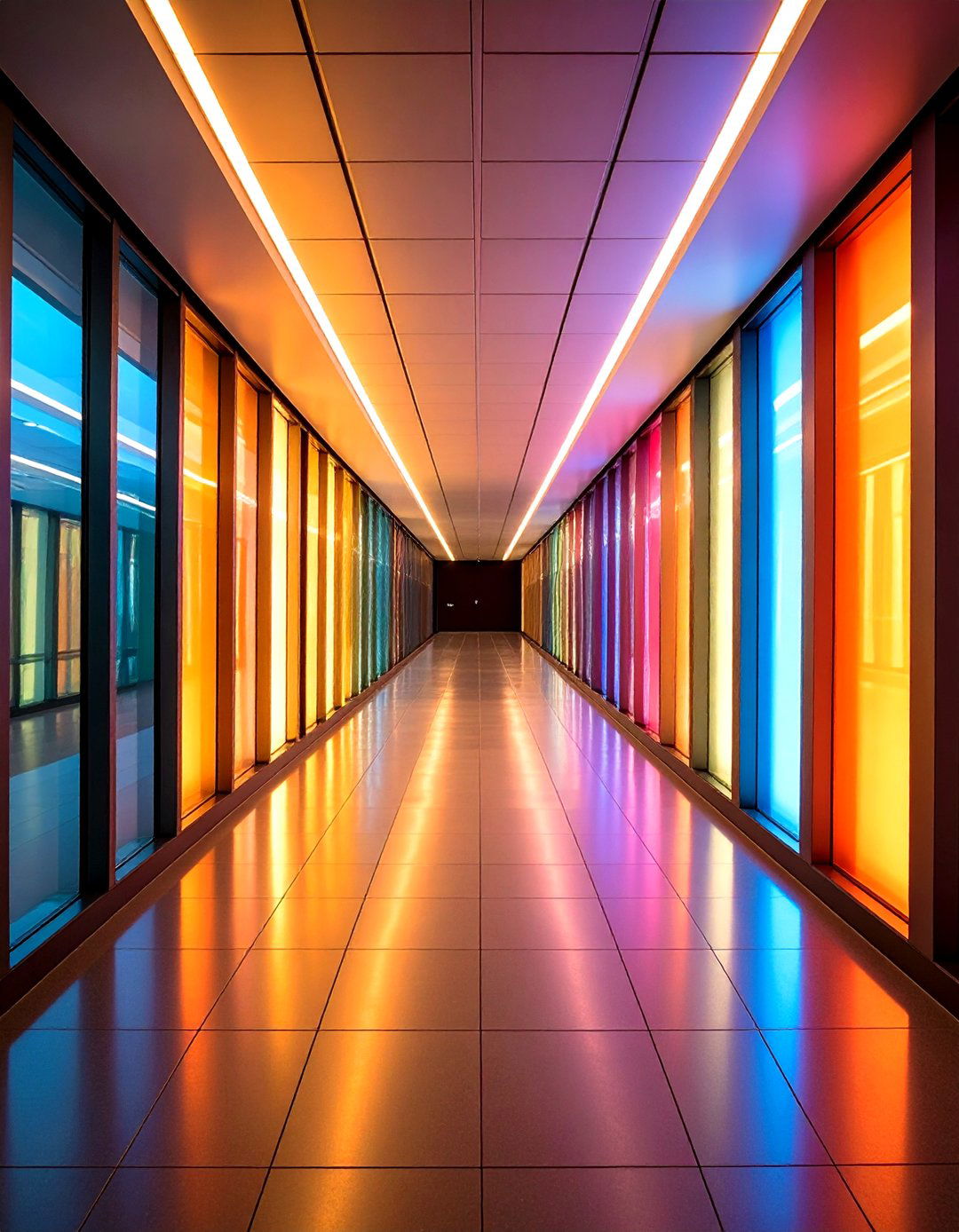
Dynamic-white or RGB-W fixtures let you slide from sunrise amber to midday cool, supporting natural circadian cues and infusing mood lighting for parties Morsale Decorilla. Program presets—warm at 6 a.m., daylight by noon, candle-glow at 10 p.m.—or invoke an “Aurora” pastel wash for movie night. Many tunable drivers fit standard housings, so retrofits are straightforward. Use a wall keypad with intuitive icons so guests can find the perfect hue without scrolling through an app.
13. Baseboard Guiding Lights for Night Hallway Safety
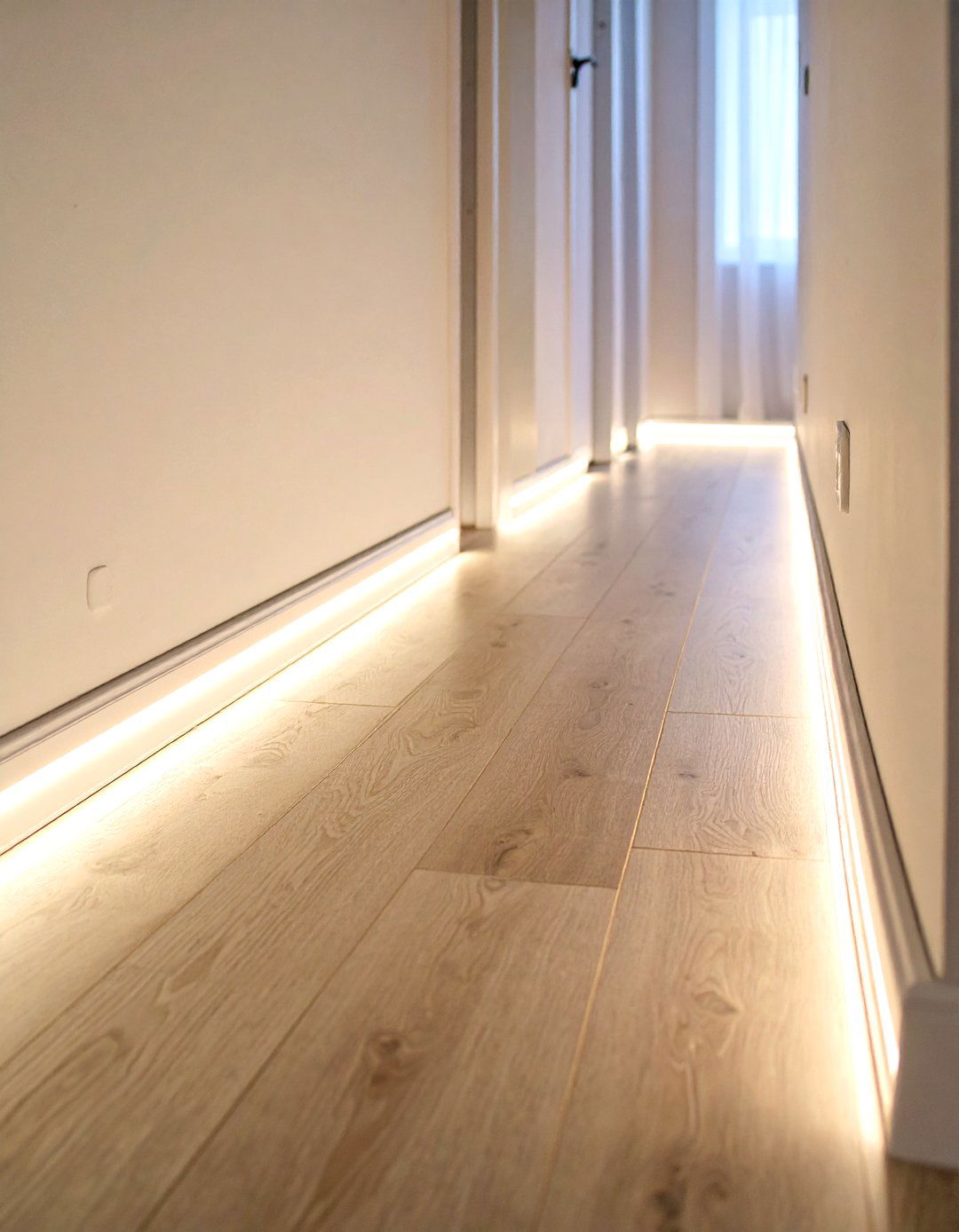
LED strips tucked behind a quarter-round at floor level guide sleepy feet without waking the household. Because the emitters sit below eye line, glare is minimal while the path stays visible. Low-output tape (60 LEDs per meter) draws less than three watts per ten-foot run but provides enough luminance to meet 10-lux code minimums. Wire a motion sensor to trigger only after dark, saving energy and battery life for smart-home sensors. The continuous ribbon also acts as a subtle design accent, outlining architecture in a soft glow Ledrise.
14. Statement Flush Mounts in Narrow Hallways
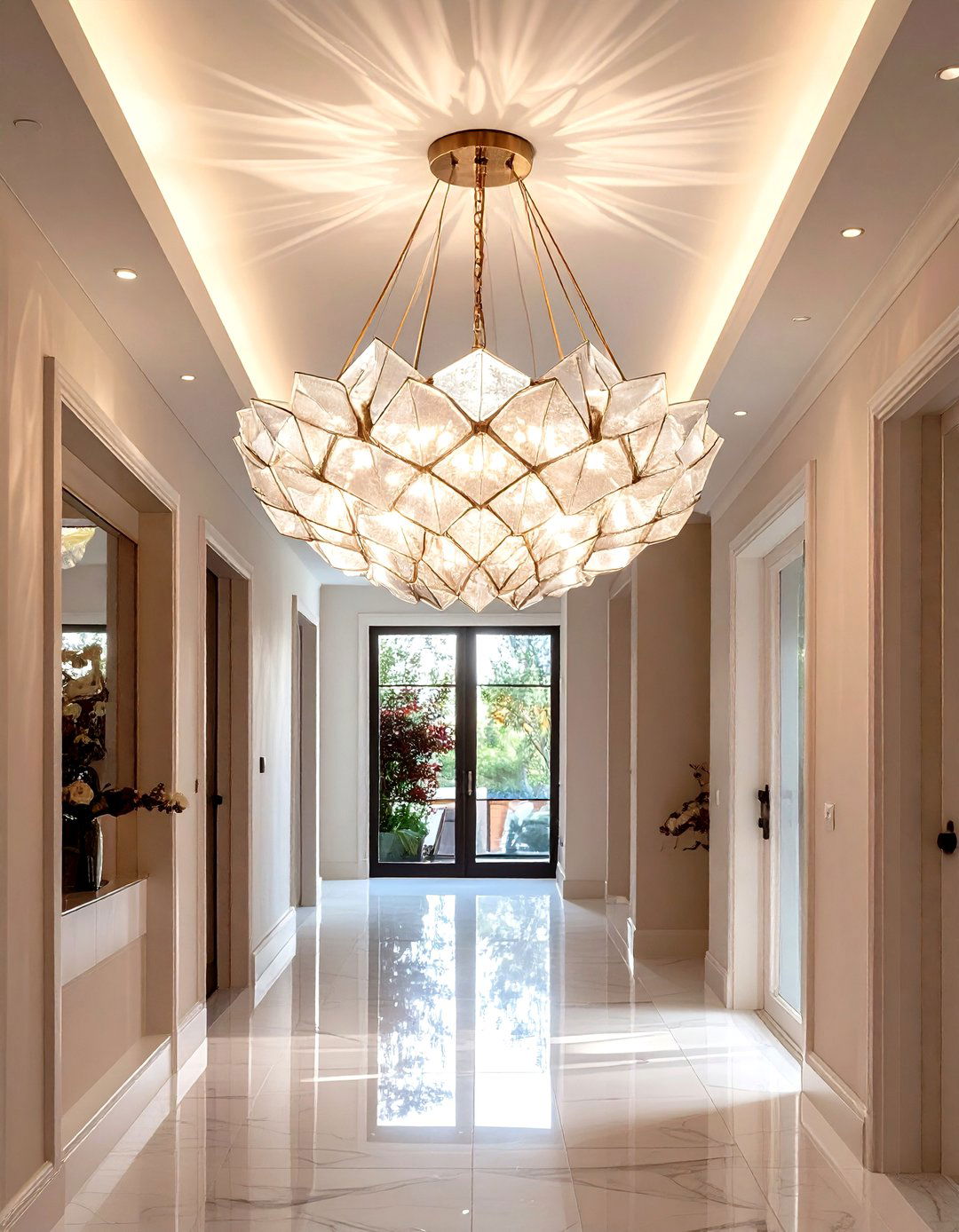
A single decorative flush mount can anchor a short hall where pendants would hang too low. Contemporary trends favor sculptural diffusers—think faceted glass or asymmetrical petals—that double as art even when off Decorilla. For 8-foot ceilings, keep total height under six inches to maintain 7½-foot headroom Atta Girl Says. Use an opal acrylic lens with edge-lit LEDs to avoid multi-shadow effects. Mount the fixture on a smart dimmer so you can dial it down to ambient mode when entertaining.
15. Mirror-Boosted Hallway Lighting for Visual Space

Mirrors opposite a light source bounce photons back into the corridor, doubling perceived brightness and widening cramped walls. Designers recommend placing a mirror on the wall perpendicular to a door or window to maximize reflected light and extend sightlines Ideal Home. Choose a frame that echoes nearby hardware for cohesion. Even a narrow 12-inch-wide mirror strip can stretch perspective, while a full-height pane can disguise closet doors. Ensure nearby fixtures use frosted bulbs to avoid sharp pinpoints in the reflection.
16. Rechargeable Battery Hallway Lights for Renters
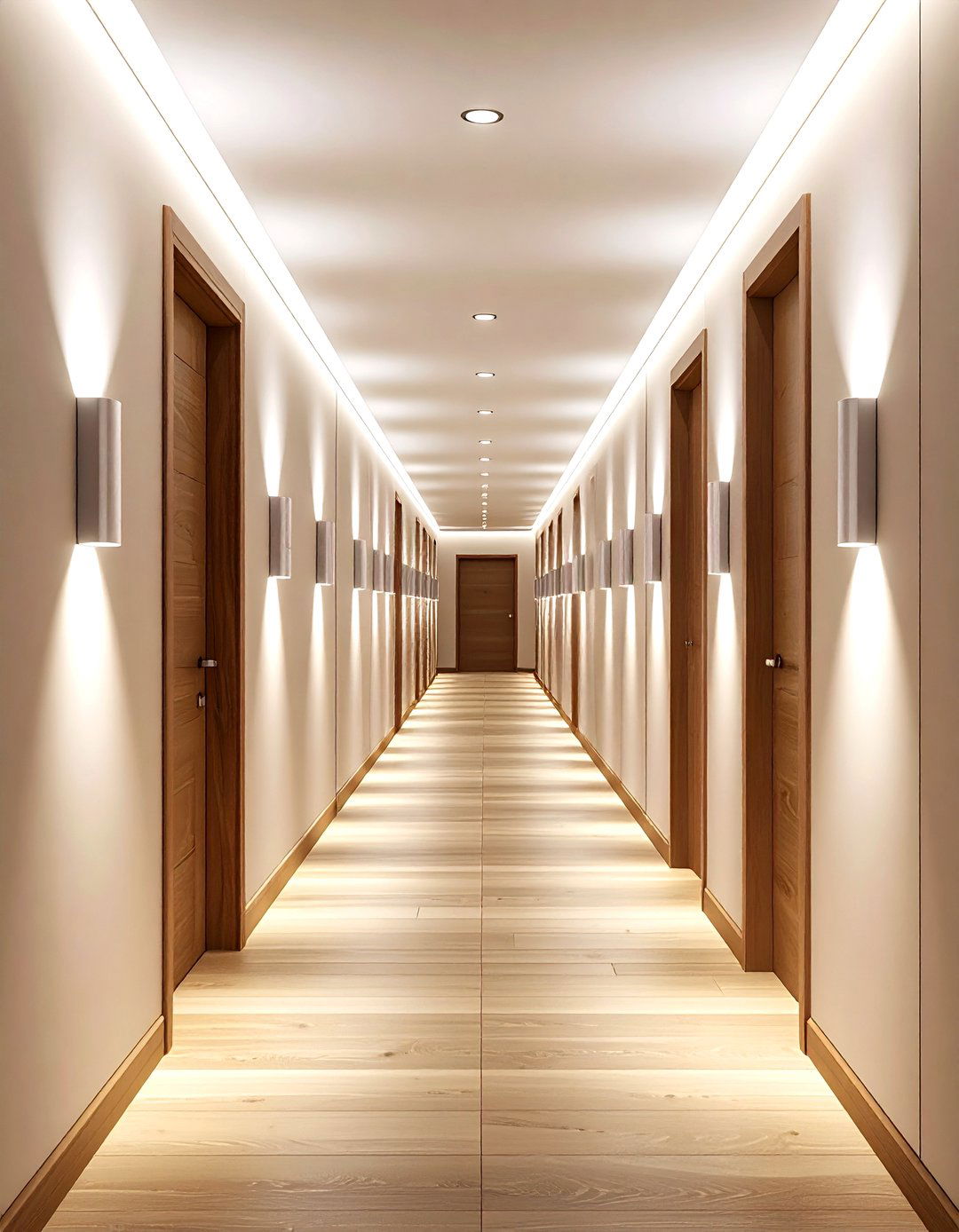
Renters often can’t hard-wire fixtures, but $10 USB-rechargeable LED pucks stick directly to drywall and last months between charges Homes & Gardens. Most include motion sensors and three CCT options, delivering just-in-time light without drilling. Mount them above skirting boards or inside coat closets that open onto the hallway. When lease-end comes, remove the adhesive strip and take the lights with you—no patching required. Because they’re standalone, you can mix warm or cool variants to suit each end of the corridor.
17. Zoned Dimmable Hallway Downlights
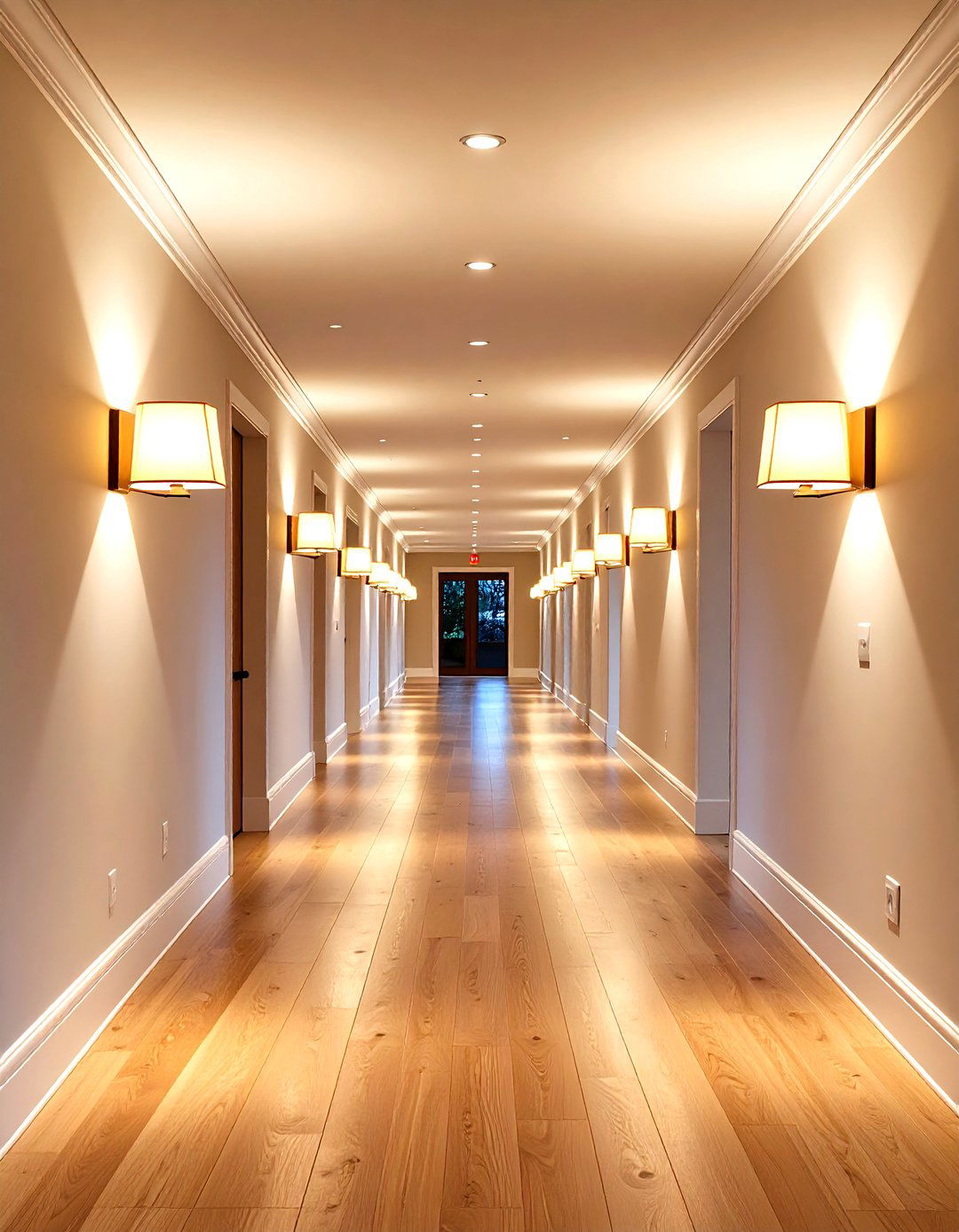
Long hallways benefit from lighting zones: divide the run into thirds and put each on its own dimmable channel. A scene controller can brighten the first zone when the entry door opens, leaving deeper areas at 30 % to save energy and produce a welcoming gradation Morsale. Low-profile tunable-white downlights handle both bright daytime tasks and late-night ambiance. In remodels, wireless dimmer modules tuck into the ceiling box, avoiding extra cabling.
18. Vintage-Inspired Globe Fixtures for Hallway Character

Mid-century schoolhouse globes—freshly popular in 2025 trend reports—add nostalgic charm while diffusing light in all directions Decorilla. Opt for opal glass and LED filament bulbs for period looks without heat or high bills. Mix globe diameters down the corridor for playful rhythm, but keep mounts consistent for order. A matte-black canopy anchors white glass and ties in metal stair spindles. Finish with a dim-to-warm bulb that shifts from 3000 K to 2000 K as it dims, mimicking candlelight.
19. Integrated Handrail LEDs for Accessible Hallway Lighting
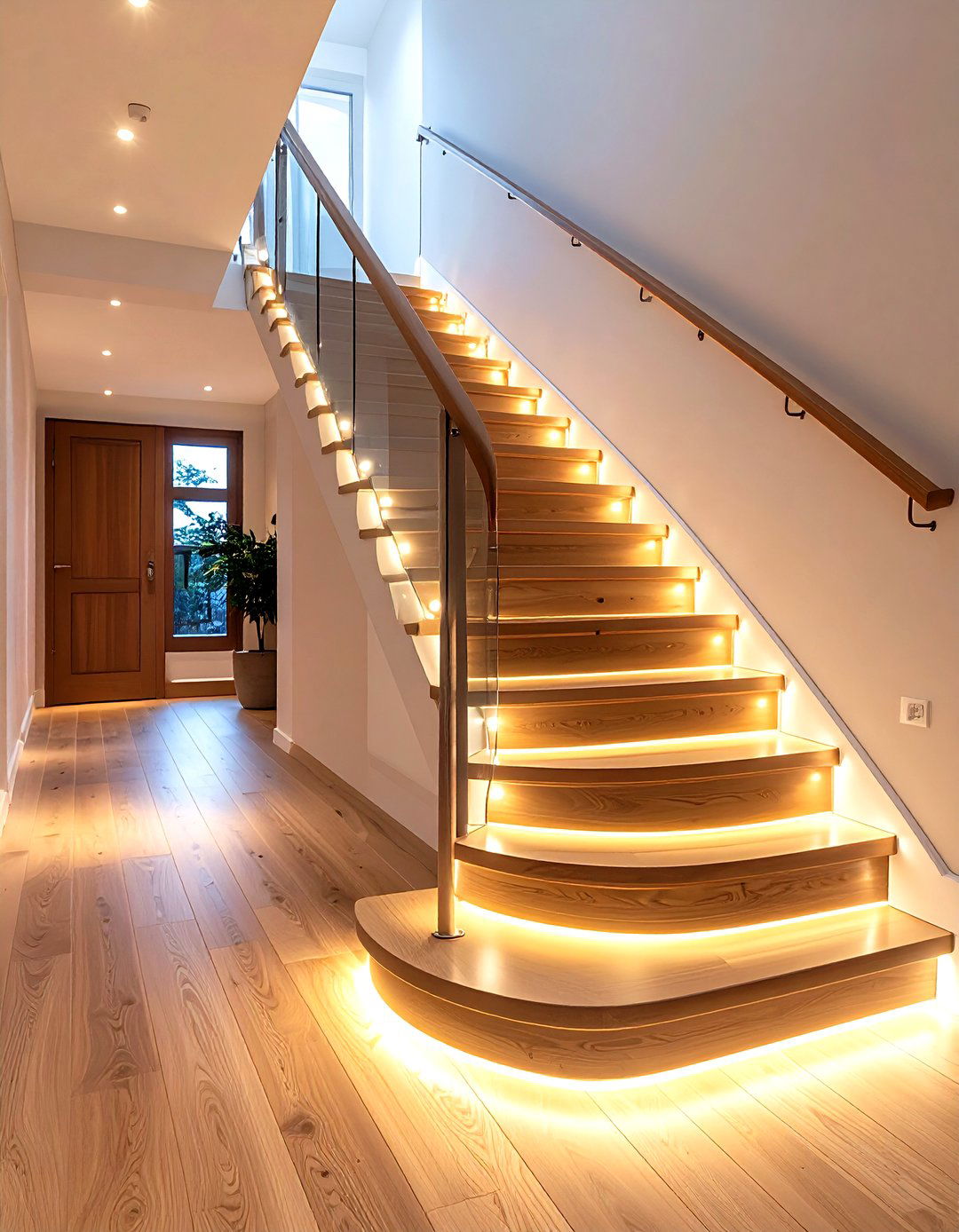
LED channels routed into wooden handrails cast a continuous wash along the floor, improving visibility for those with limited mobility while highlighting beautiful joinery Greco Railings. Because the strip hides behind a diffuser, the light is glare-free and tamper-resistant—great for households with children. Low-voltage drivers mount at the baluster base and feed 24 V safely through concealed wiring. Add a dusk-to-dawn photocell so the strip glows automatically at night and shuts off come morning.
20. Oversized Lanterns Creating a Hallway Focal Point
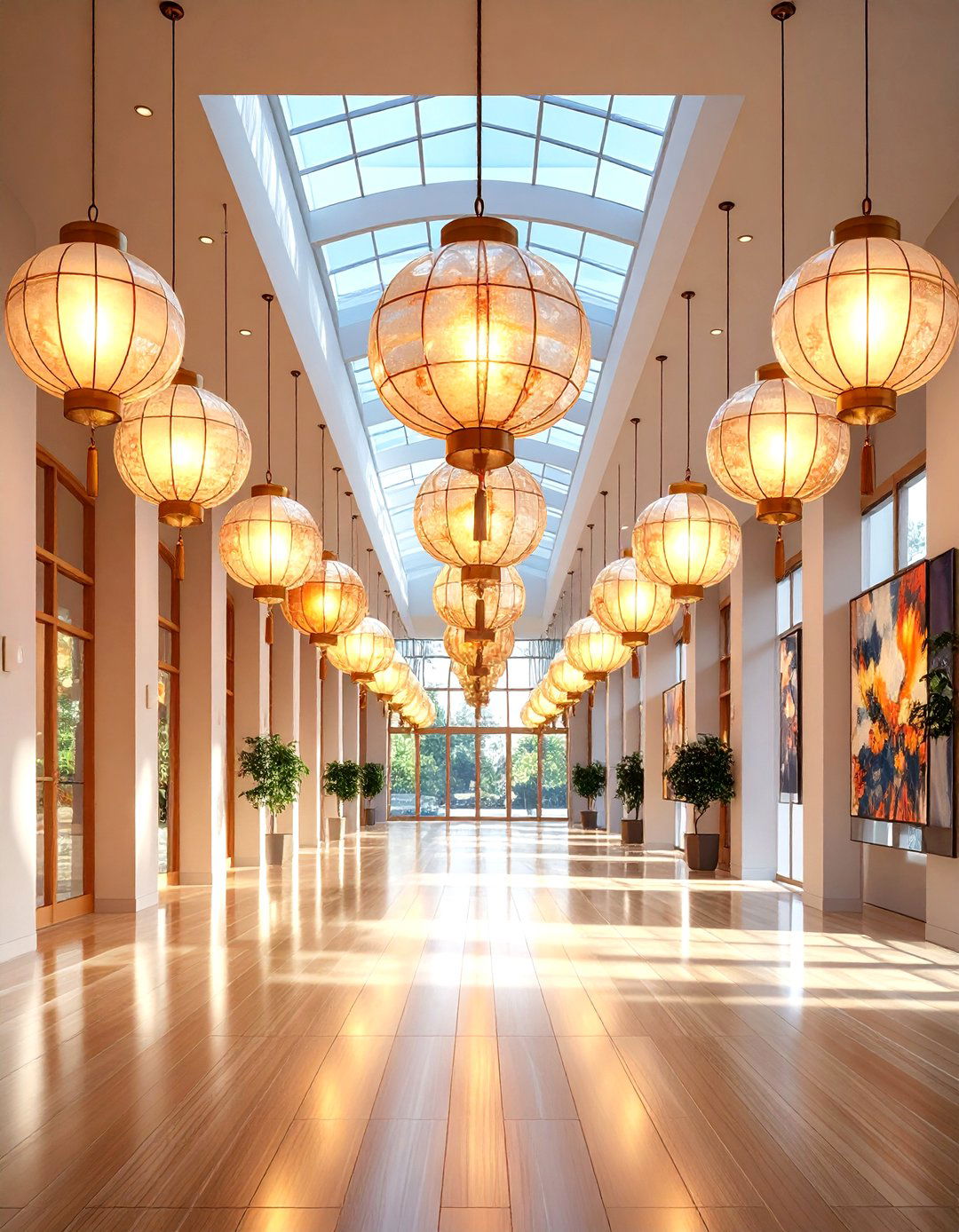
In spacious foyers that flow into hallways, an oversized ceiling lantern becomes both sculpture and guidepost. Current design trend round-ups highlight extra-large fixtures—think 18- to 24-inch cubes or open-frame cages—as a key 2025 statement piece Decorilla. Suspend the lantern where hall and entry intersect, keeping its base at least seven feet above the floor. Clear glass panes allow light to spill sideways, illuminating artwork further down the corridor. Fit dimmable LED candelabra bulbs to capture the sparkle of traditional filament without heat buildup.
Conclusion:
Thoughtful hallway lighting does far more than banish shadows; it steers traffic, saves energy, showcases art, and sets emotional cues for the rooms beyond. Whether you embrace recessed precision, sculptural pendants, or discreet motion-sensor strips, each layer you add brings new comfort and character. Blend warm and cool temperatures, integrate smart controls, and harness daylight where you can—the result is a passage that greets every step with purpose and style.




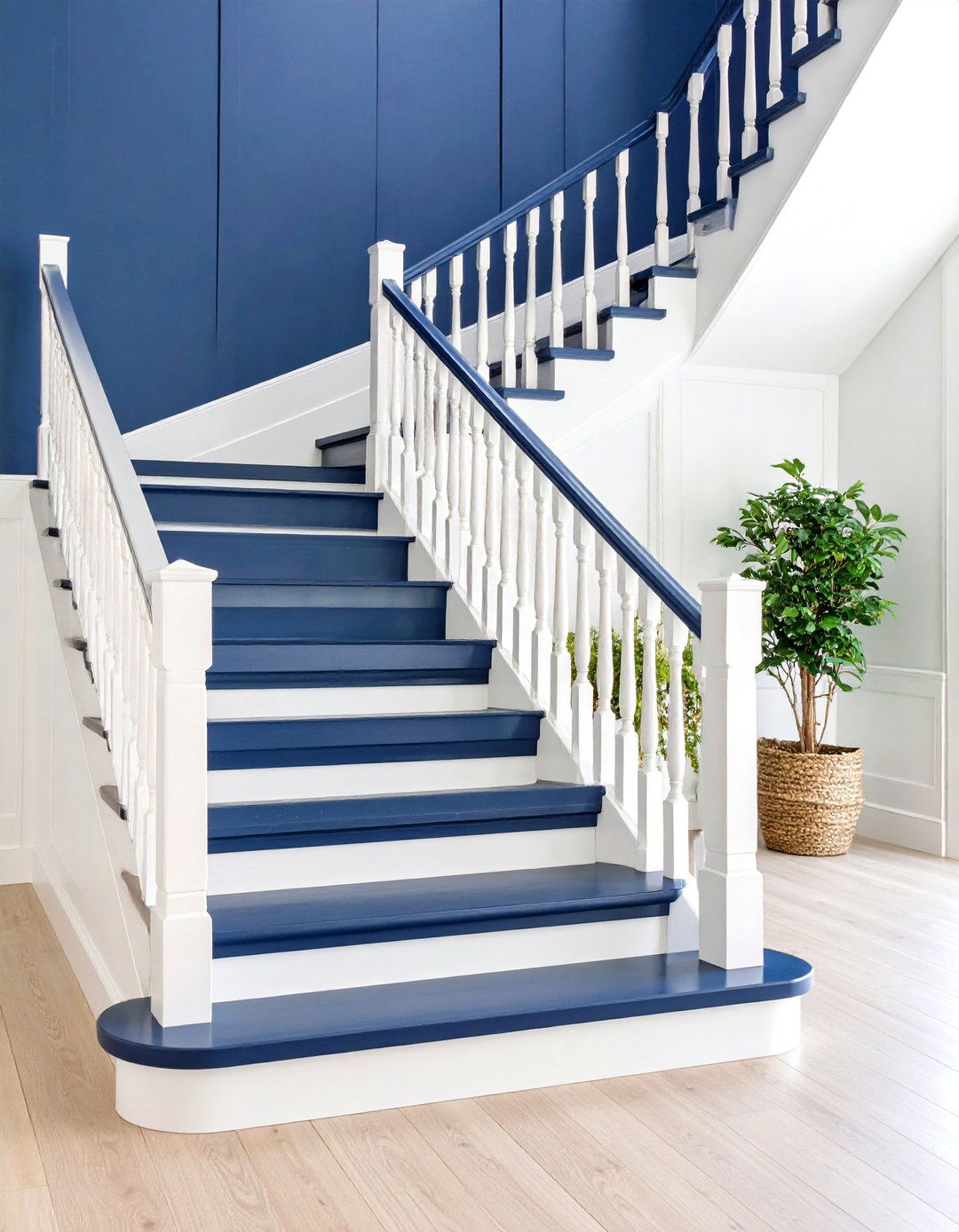

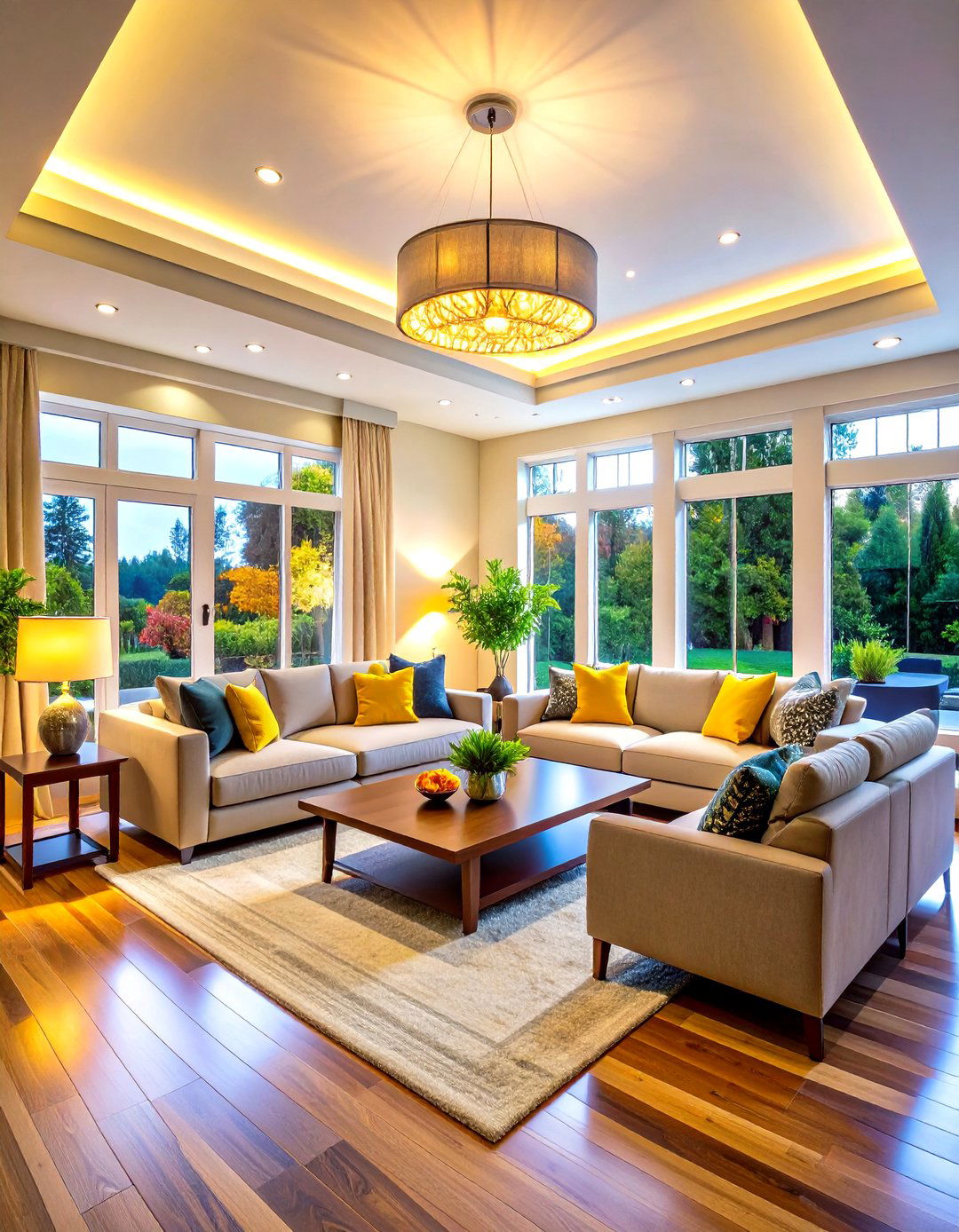

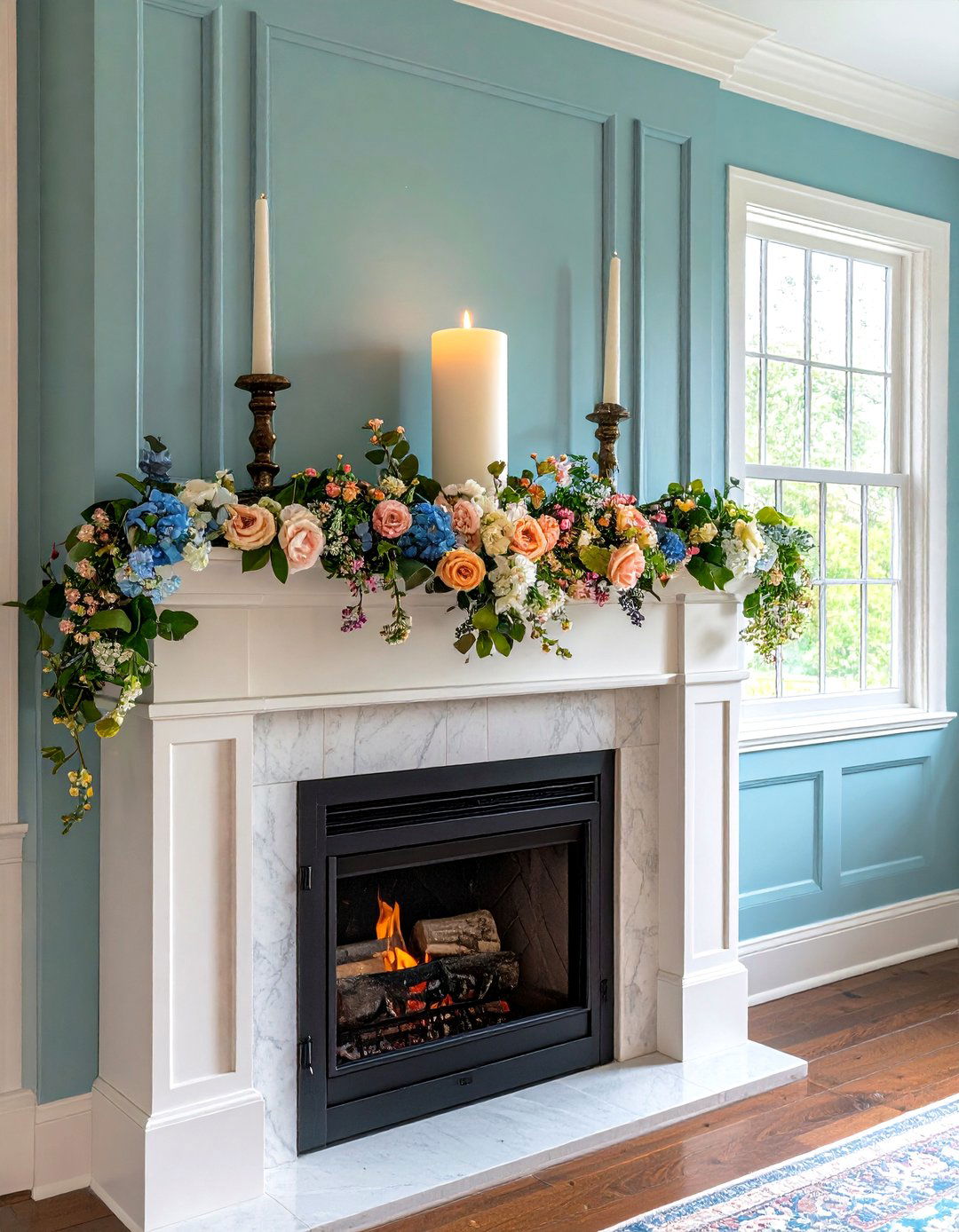
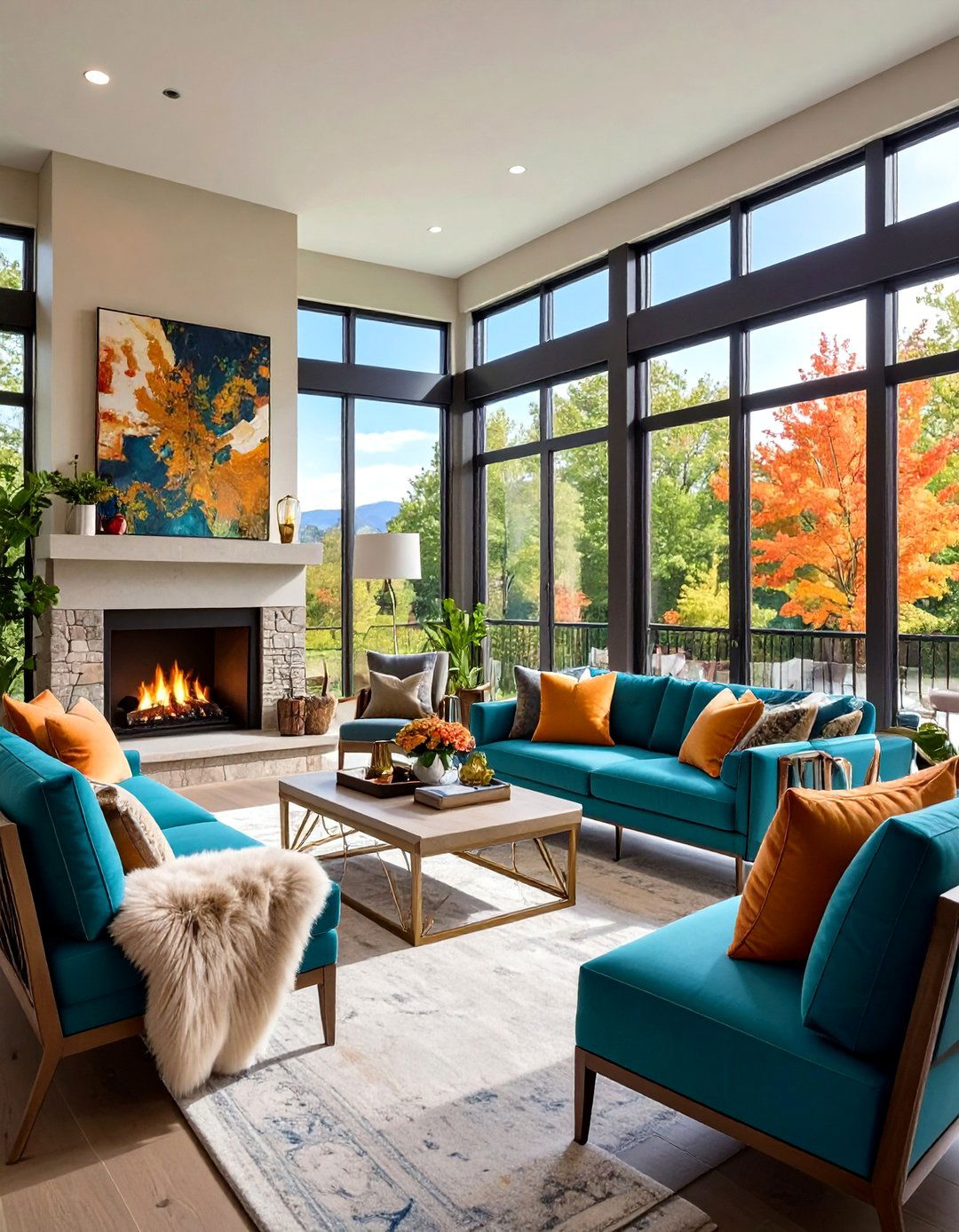
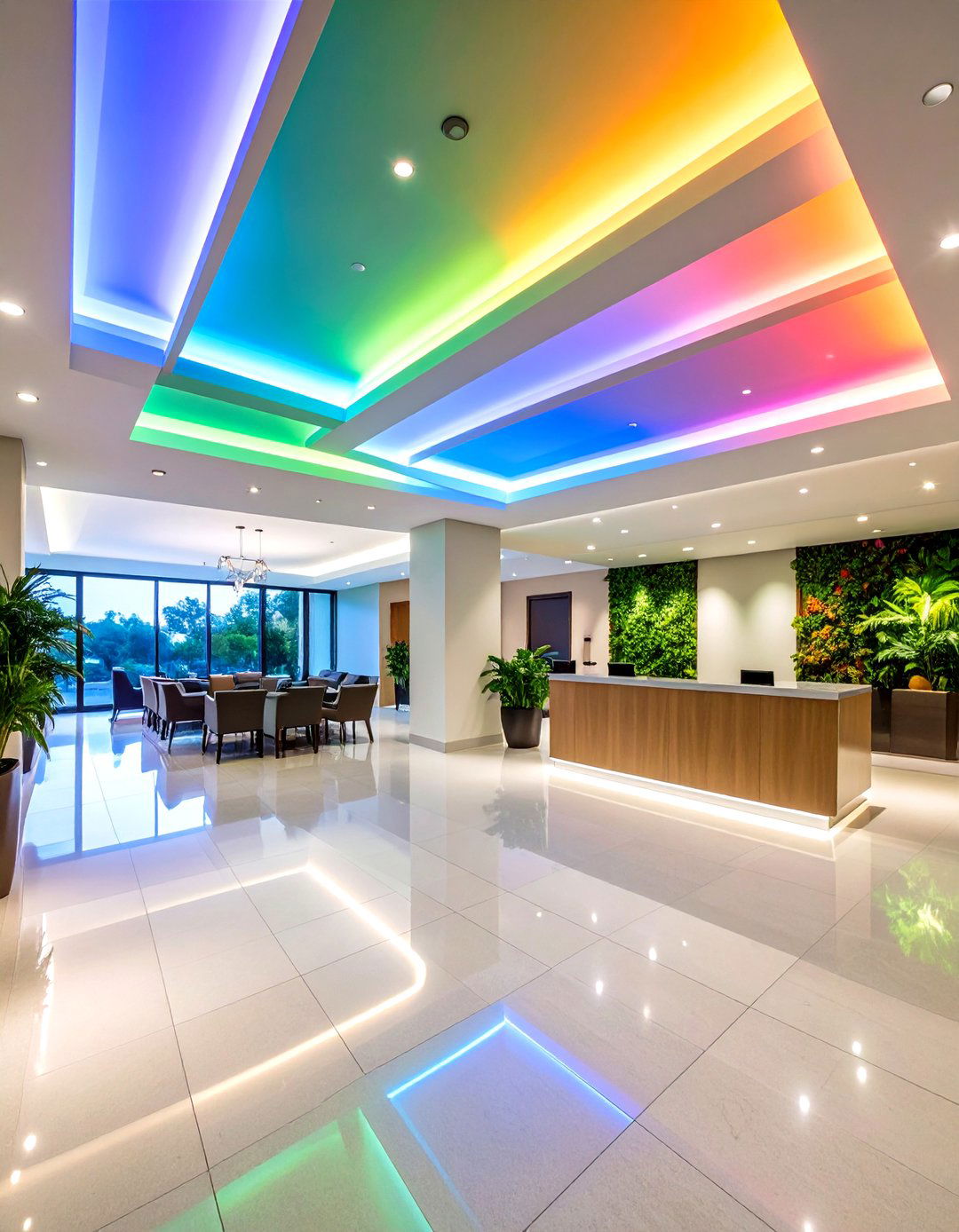
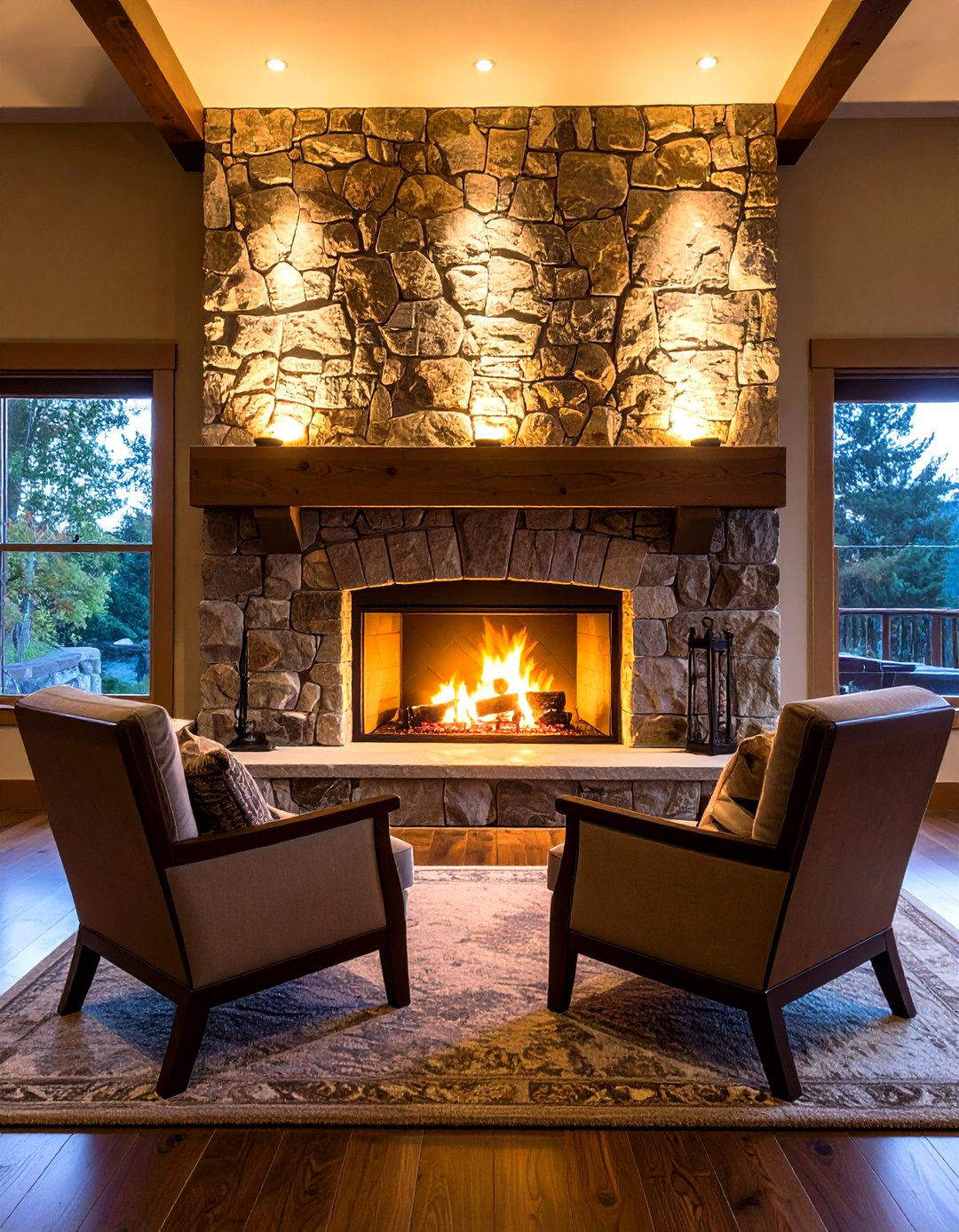
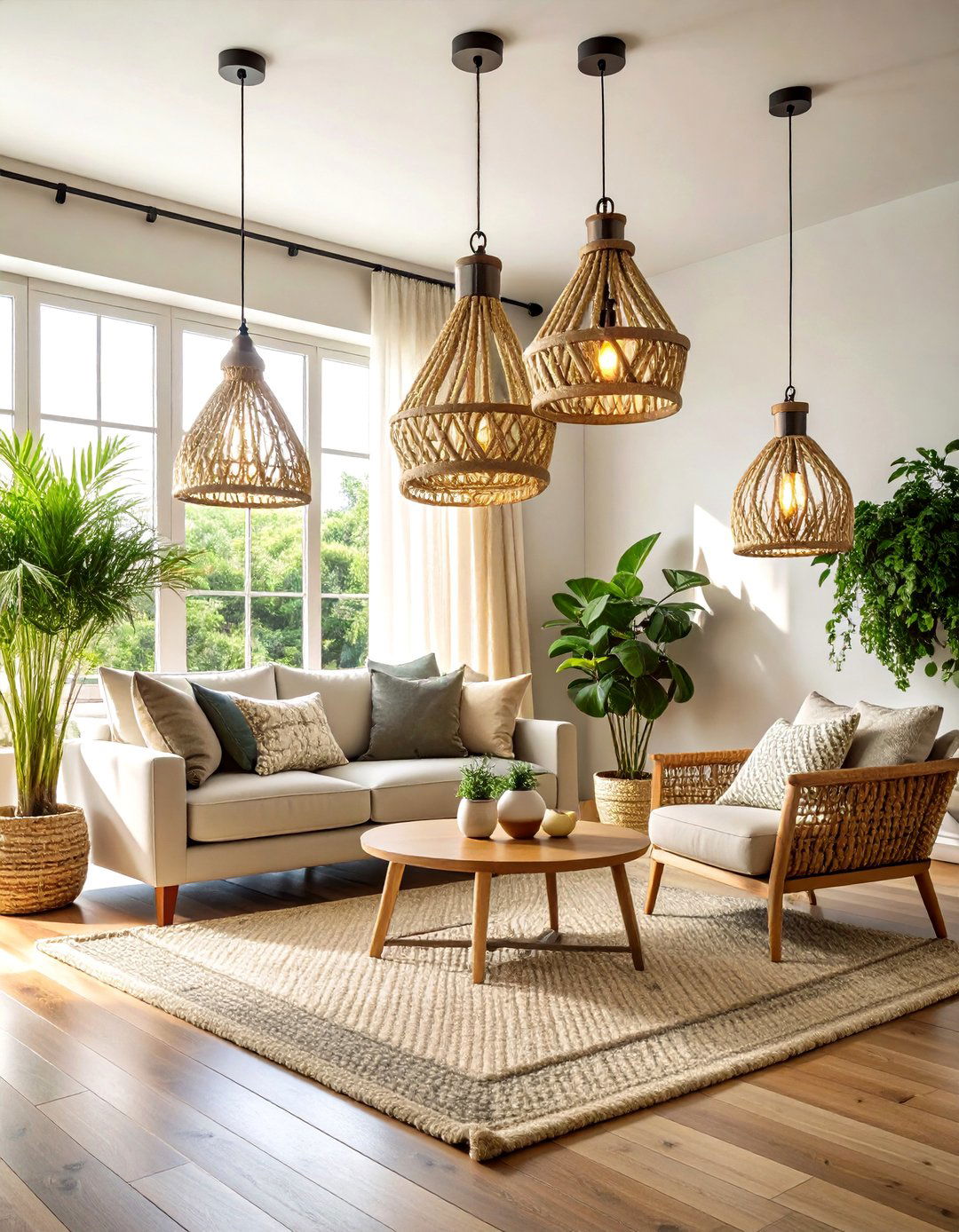
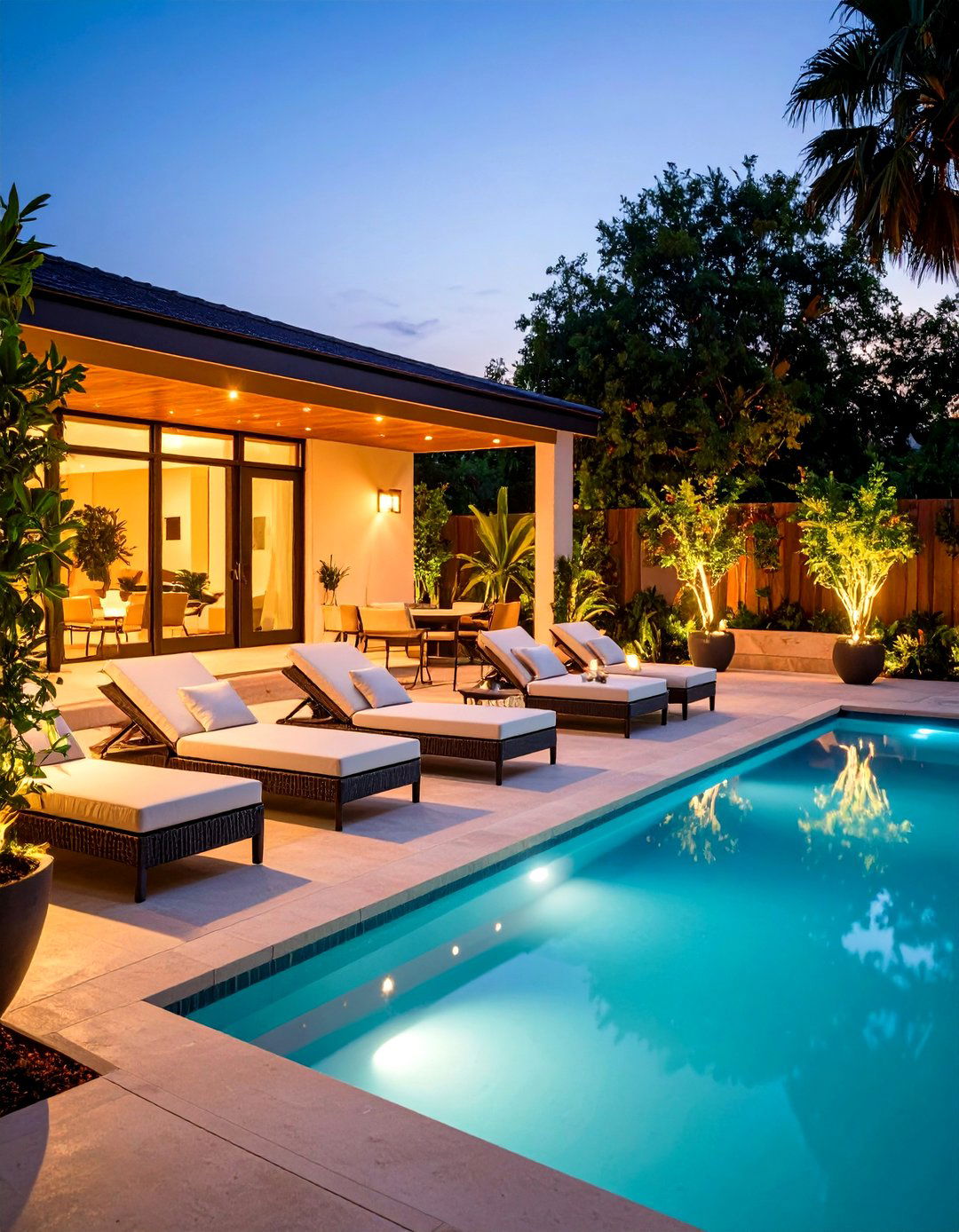
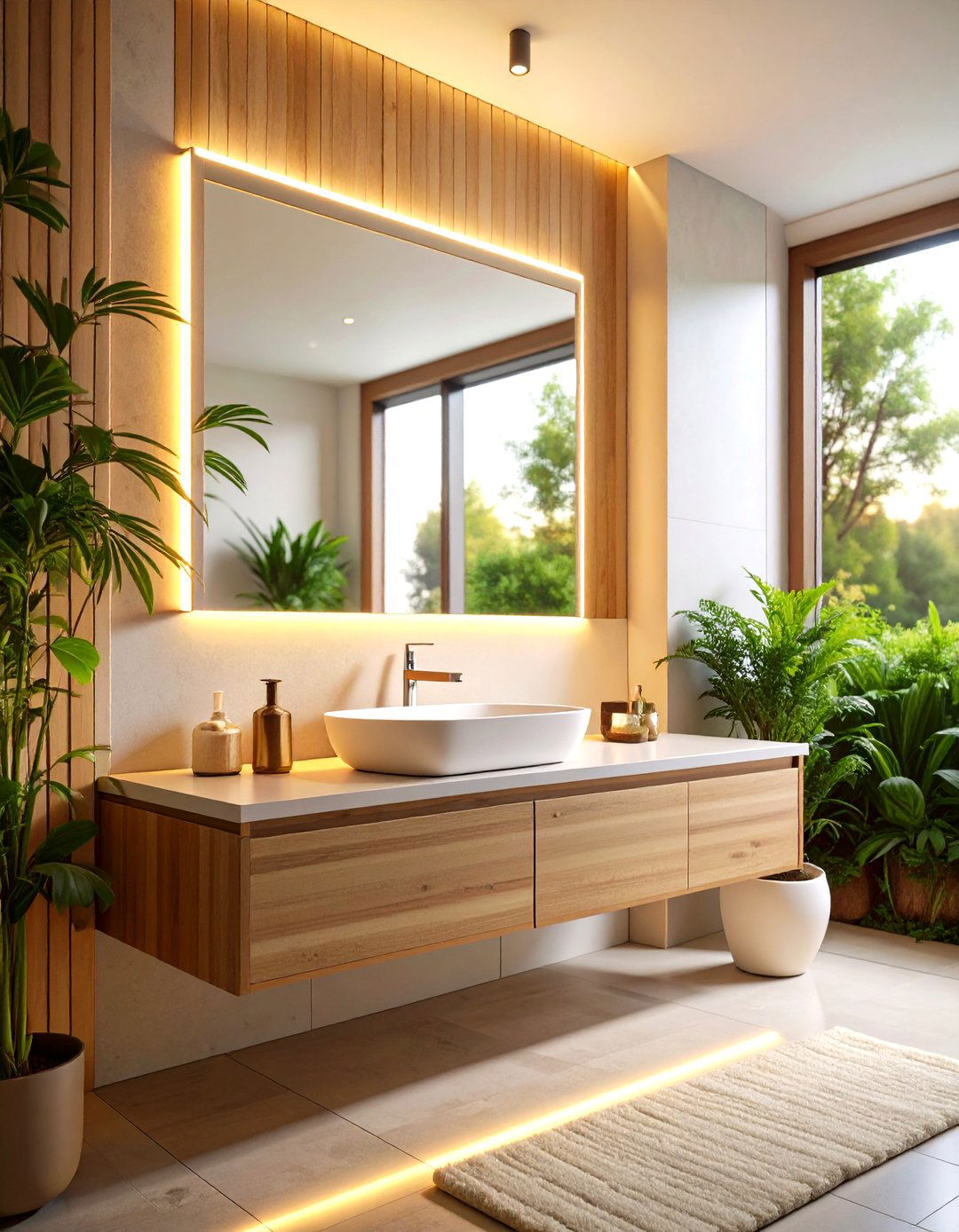

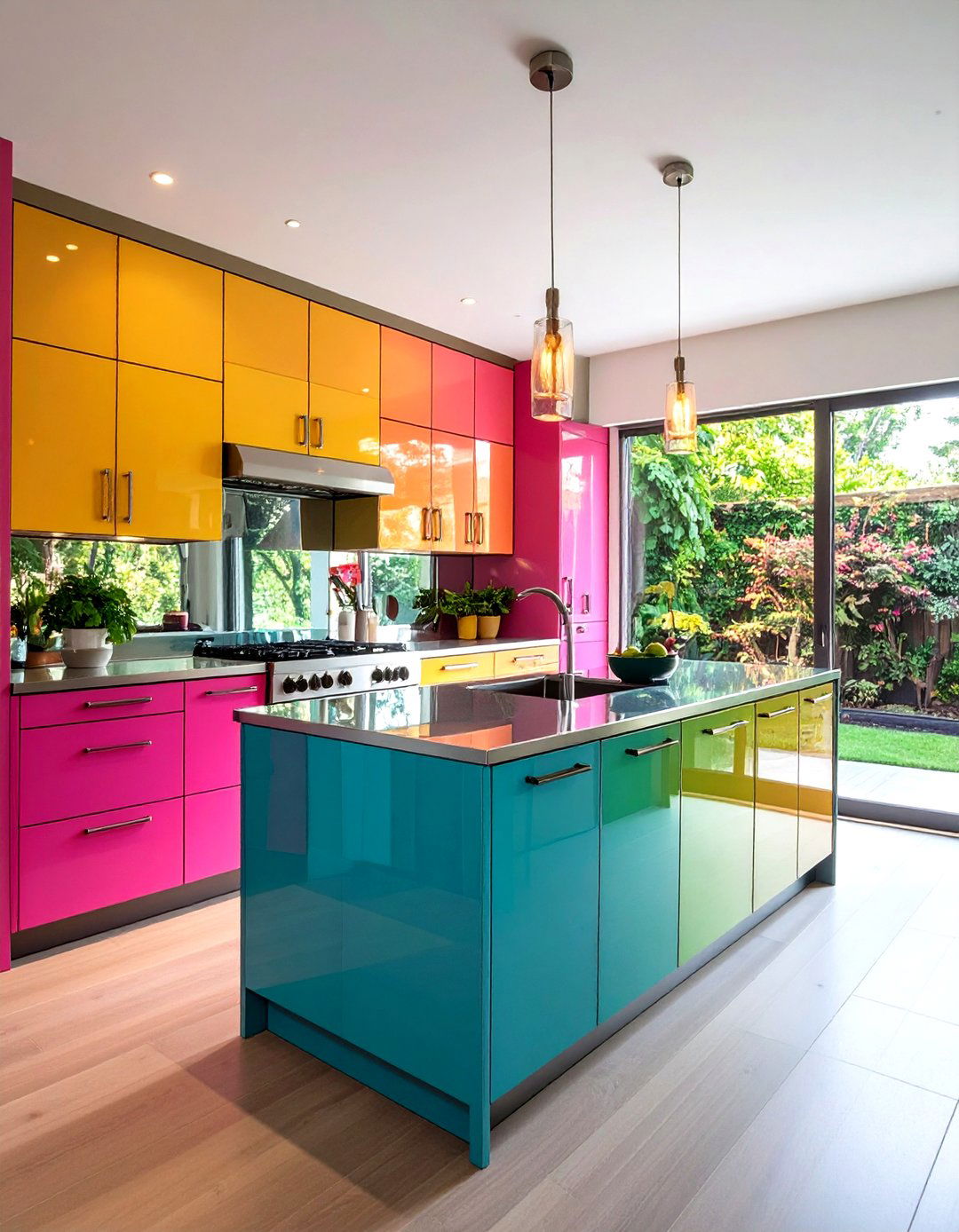
Leave a Reply